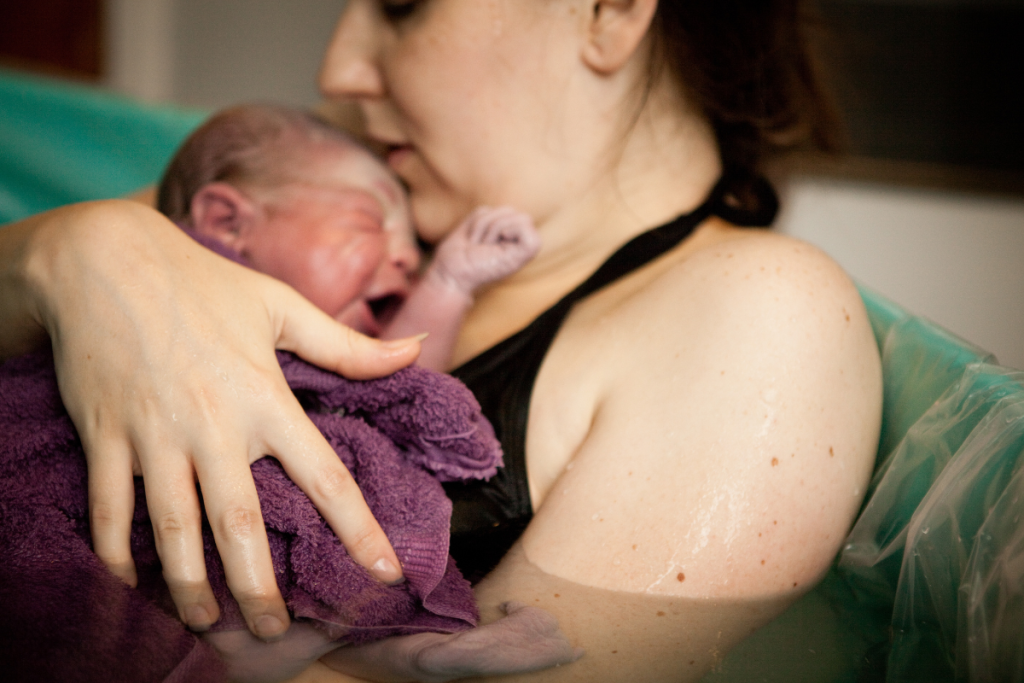How to Create Natural Birth Plan: Free Sample Template
I’m going to show you just how to create a natural birth plan and give you the free sample template to make it that much easier. Whether you deliver in a hospital, birthing center, or home birth, these sample natural birth plan templates will be just what you need. Some have called these terms such as birth preferences, preference list, birth wishes, wish list, or goal sheet.

What is a natural birth plan?
A natural birth plan is where a pregnant woman, writes out her choices on how she wants her environment and herself treated while in labor, delivery, and early hours of postpartum. It is her preference for the type of care she receives from her healthcare provider. The natural birth plan is a written document that will tell her caregivers, nurses, midwives, doctors, and whomever else is on her birthing team, what options are important to her. It will lay out her priorities, any specific concerns, and how she would like to be cared for during her labor, birth, and post-delivery. This can be done for both a planned vaginal delivery and a planned cesarean.
The birth plan is not a binding legal agreement, even if signed by your birthing team. This cannot be construed as a promise or guarantee that your birth will be carried out exactly as desired and written down. Situations can always arise that would require an open mind for changes to your preferences.
Advantages of a natural birth plan
There are advantages to both you and your birthing team with having a natural birth plan.
An advantage to you is that you will have to look ahead to your birth. It will encourage you to become educated on labor and birth and how you think you will be able to handle the unpredictability, stress, and pain that are part of childbirth.
An advantage to your doctor or midwife, and doula will be their having an understanding of your goals and expectations going into labor and birth. It will allow them to assist you in creating a realistic natural birth plan that will be comfortable for all involved. This will also allow our caregiver to discuss any potential misunderstandings or disagreements.
For nursing staff and assistants, it will help them become acquainted with who you are and help them individualize your care. When you go into the hospital, the nurses will not have met you before most likely. Same with a midwife’s assistant at your birth. This will give them the chance to meet your expectations and help you have the birth you’ve envisioned.
Overall, the success of a natural birth plan depends on you being realistic, educated, flexible at times, and able to communicate clearly. At the same time, it also requires your birthing team to welcome your participation and individualize your care.
Normal labor and birth
When pregnant women have labor and birth proceed normally, few interventions are necessary for medical safety.
I fully believe that every woman and their partner should know what the normal stages of labor are and how they can present in labor. If this is your first baby or first time for natural childbirth, I cannot recommend understanding the physiology of birth enough to you. When you are educated on the process your body will undergo, the more likely you are to have the birth you want.

An example of this is when you are in the transition phase. This is the typical phase when a woman wants to give up and starts saying they can’t do it anymore. Little do they realize that they are truly at the endpoint of their labor. Going into labor knowing this, your partner can remind you of this and give you that extra bit of encouragement you need to keep pushing through. Especially with having a natural birth.
For my second birth in the hospital, I caved right at the transitional point and had an epidural put in. After having had three home births, I can tell you I regret that moment. I know I could have pushed through had anyone told me I was at the end and the natural birth plan I had envisioned was within my grasp.
Whether this means taking an online birth course, an in-person birth course, or reading birthing books, this is part of what will help you envision and plan out your birth.
Writing the natural birth plan
In this natural birth plan, write out your most important things such as issues, fears, or concerns; a general description of your ideal birth, care of your newborn, what you expect in early postpartum, and what unexpected turn of events were to happen.
This can sometimes seem like an overwhelming task to complete. There are a lot of topics that every expectant mother should consider for herself, her newborn baby, and her support team. The mother will also have to imagine scenarios she may not want to, including a Plan B birth plan if unwanted medical interventions may be necessary.
I’ve created an easy sample natural birth plan template that can be used to help her work through the birth options. In the brainstorming phase of writing the natural birth plan, I’ve laid out 9 key sections to consider and make notes on after researching, asking questions, and discussing it with your birth team.
Brainstorming Phase
Introduction
The first three sections of the brainstorming phase in your natural birth plan are to introduce yourself and your partner or support person, to the medical team. If this is in the hospital, it will be the doula if hired, nurses, midwives, and doctors. If you’re at a birthing center or planning a home birth, it would be your midwife and possibly a doula if desired. All the healthcare professionals involved in your care would like to know a little bit about who you are and if any particular aspects would make it easier for them to care for and follow your birth plan.
These are the sections where you will explain why you have made decisions such as your birth team, place of birth, and why this natural birth plan is important to you.
Examples of this are how your pregnancy has been going, if you’ve had difficulties with infertility, previous miscarriages, previous problems in pregnancy or birth; fears of giving birth, hospitals or medical procedures in general. Any cultural or religious preferences, special needs that need to be accommodated, and if a natural birth is extremely important to you.
Also inform of any medical, emotional, or physical needs your partner may have. If there is a possibility of a unique situation for those involved in the birth (adoptive parents, in-laws, children, or other stressful family dynamics, etc).
At the end of this section, you may want to state that you appreciate the expertise, help, and support of the medical team in carrying out and respecting your birth plan.
This may be the last section you write in your natural birth plan after you research all of your options for the type of birth you want to have and where you will deliver.
Procedures to research
We live in a modern medical model with many medical procedures available at our fingertips. While this can be life-saving at times, at others it may just not be what you want or need.
This section is going to require that you and your partner research the most common procedures for pregnancy, labor, birth, newborn care, and early postpartum.
First, if you have not already, you need to decide on where you will give birth and with whom as your birthing team. This can be from a hospital to an unassisted birth if desired.
Next, you will need to discuss with your medical provider what they are expecting you to complete while pregnant, in labor, and at delivery. These will be the procedures you need to research and decide if they are something you want to do.
Examples of procedures while pregnant are:
- Genetic testing
- Glucose drink vs monitoring blood sugars
- Ultrasounds early, mid and late in pregnancy
- GBS testing
- Vaginal exams
- Vaginal birth vs cesarean section
These are important to discuss in early pregnancy to help determine if this is the correct provider for you and to have a better understanding of your available options.

There are a lot of procedures for when a woman is in labor. Here are a few examples, but by no means the entirety of possibilities. I encourage you to discuss your medical history and current pregnancy health with your healthcare team to know what their expectations are for you.
Labor & birth procedures to research:
- Vaginal exam
- Positions in labor
- Movement and equipment use (ex: birthing ball, birthing stool, squat bar)
- Fetal monitoring
- Food and fluids
- Pain management
- Presence of partners/others
- Expulsive techniques
- Use of forceps
- Delayed cord clamping
- Immediate skin-to-skin
Finally, you will need to decide on the care of your newborn baby. Even at birth, you have a lot of immediate decisions to make for your new baby.
Newborn care to research:
- Hep B shot
- Erythromycin ointment
- Vitamin K shot
- PKU
- First bath
- Circumcision
- Breastfeeding or formula
- Sugar water
- Pacifiers

For some of these, you may already have a decision made. Some of these you may have never heard of. Whatever your decisions are, you will need to consider putting it into your birth plan.
Procedures you’re okay or not okay with
How do you feel after researching the above procedure topics? I hope that you feel empowered knowing what you want and not want to do. After all, that is the entire point of the birth plan. This is the longest part of the birth plan to get finalized in my opinion. There is a lot to consider!
Comfort measures
Comfort measure, also known as pain management, is a very personal journey. Most of us can look at a list of comfort measures and immediately know what will not work for us based on our history and personality. For example, visualization is not for me. I do not have the mindset for it at all. However, I do know that water is always a comfort to me.
Being able to have comfort measures listed that you would want to try readily available can save you the brain space on asking for it in labor. Your partner and birthing team will know what you want and offer it as needed. It greatly helps with having a more peaceful birth.

Care of your newborn baby
You should have already been researching and talking with your partner about what procedures, if any, you want with your newborn baby. This is the section that you will be writing out yes/no to the list above.
If you are going to be declining anything, be prepared for the hospital and midwife to have paperwork for you to sign absolving them of any legal ramifications. I do encourage you to read the forms though. Some of the forms can have wording that states you are aware you’re putting your baby in a harmful situation, and I would never sign anything stating that. I am not an attorney, so please make your own educated and personal decision on this matter.
Plan B
This is the least fun part of your birth plan to envision for your big day of giving birth. These are your delivery preferences should something not go as planned and you have to pivot in your birth plan.
Here you are to put what your list of preferences would be if you had to have a cesarean delivery for example. A birth plan for this can help you retain some of the priorities of your original birth plan.
What would you want the delivery experience to be like in that particular situation? Would you want your partner in the operating room with you if possible? Speak with your birthing team about what options may be available to you.
Misc sections
I do not expect to have thought of everything for each unique woman and her family. This is the space where you can write anything else that you may be considering so you don’t forget it.
Time to write it down
After you are done brainstorming and know what your birth plan will be, write it down. Once you have done this, you will need to give a copy of your birth plan to all in your birth team and I would suggest keeping extra copies in your hospital bag. If you are planning a home birth, I would have a separate written plan for the home and the hospital. Make sure to keep the hospital one in your hospital bag or purse.
Free Template
My free template and worksheets are here so you can fill all of this out fast and easy. I hope that being empowered with education and a birth plan, you will have a positive experience and a healthy baby. Included in this free download are the brainstorming worksheet, comfort measures checklist, birth plan template, blank checklist pages, and blank note pages.
My birth story
If you would like to know about my birth experiences check out Positive Home Birth Story | Birth of a Large Baby!
You can also learn about my hospital births and other home births from this YouTube video
Disclaimer: This is not medical advice. I encourage you to speak with your healthcare provider about your particular circumstances and the different options available to you. Laws will vary by state and should be considered when making your birth plan.
Let me know if this was helpful
Leave me a comment below if you found this helpful or not. I would love to know how I can better help you prepare for your birth!
Natural birth plan resources
I have found these books helpful with so much in my previous pregnancies:
The Natural Pregnancy Book by Aviva Jill Romm
Birthing from Within by Pam England and Rob Horowitz






